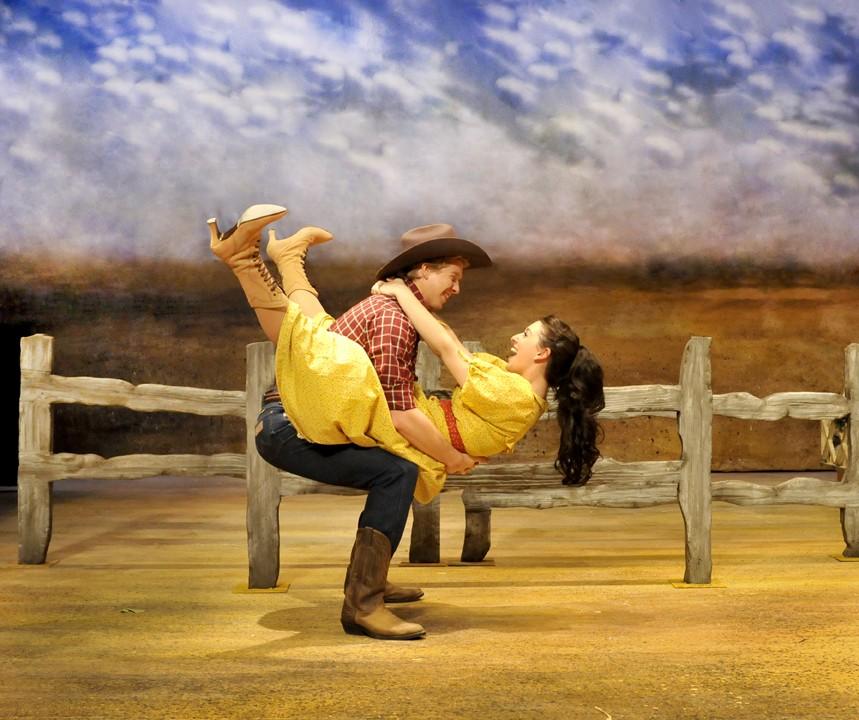The Arizona Repertory Theatre’s presentation of “Oklahoma!,” which previews Sunday, promises to be modern and exciting.
Director Danny Gurwin, who has appeared in multiple Broadway shows, is acquainted with the weakening interest of younger audiences in traditional theater. Gurwin has strived to bring out the modern aspects of the production that students can relate to.
“It’s an opportunity for students to view a little piece of history, but also to find it romantic and sexy, because it really is,” Gurwin said. “As a director, I really tried to make sure it has those elements involved in it. Just because it sounds like some old musical doesn’t mean there isn’t a lot of romance. There’s a lot of humor. If people think it’s a creaky old show, they’d be surprised at how warm, funny, silly and romantic it is.”
“Oklahoma!” helped mold the romantic comedy genre. The plot is a dramatic love triangle. Two men vie over the love of one woman on a farm in Oklahoma, flanekd by a supporting ensemble of humorous friends.
There have been two film adaptations of Oklahoma: one in 1955 and one in 1999. Rather than following a straight-line adaptation of one of them, Gurwin settled in the middle in order to create a unique setting.
“The 1955 movie is very MGM Technicolor,” Gurwin said. “We decided not to go that route. The Hugh Jackman revival in 1999 was much grittier. We’ve kind of split the difference here. It has the joy and color of a Technicolor show, but some of the grit in the text and scenery and staging of a John Wayne movie. It feels like the Wild West, but it still doesn’t lose the classic musical style. We tried to combine the two ideas.”
Richard Rodgers and Oscar Hammerstein, arguably the best theater-writing partnership of the 20th century, wrote “Oklahoma!” It’s considered the most transformative production in theater history due its use of music.
“The show pulled dance into the storytelling and was able to use every art form to tell one story,” Gurwin said. “This was the first musical of its kind where the songs are part of the plot and further the plot as opposed to just being there for entertainment’s sake.”
It’s a play that uses musical score to incite emotions in the audience, a novel concept back in the 1940s. Understanding “Oklahoma!” is important to understanding modern-day entertainment.
Although Gurwin has headed multiple productions in the past, he said this one is probably the biggest he’s ever directed, with 32 students making up the cast. Eight dance majors are involved to help ensure the cast can handle the sizable dance element of the show. Friend of Gurwin and Broadway veteran Mark Esposito helped out as a guest choreographer. Because it’s such a big cast, tyounger students had the opportunity to grab parts they might not have otherwise had the chance to. Gurwin said there are juniors in lead roles, as well as some freshmen in the ensemble cast.
Beneath the musical entertainment, “Oklahoma!” is a show that is telling of the time period.
“It speaks to the idea of America coming together,” Gurwin said. “There’s a whole thing that the farmer and the common [person] should be friends at the beginning of Act 2. It’s Rodgers and Hammerstein making a statement about [former President Franklin Delano Roosevelt] and the New Deal bringing America together.
Underneath these musical layers we don’t think about, there was this idea of writing a show that was truly American.”









